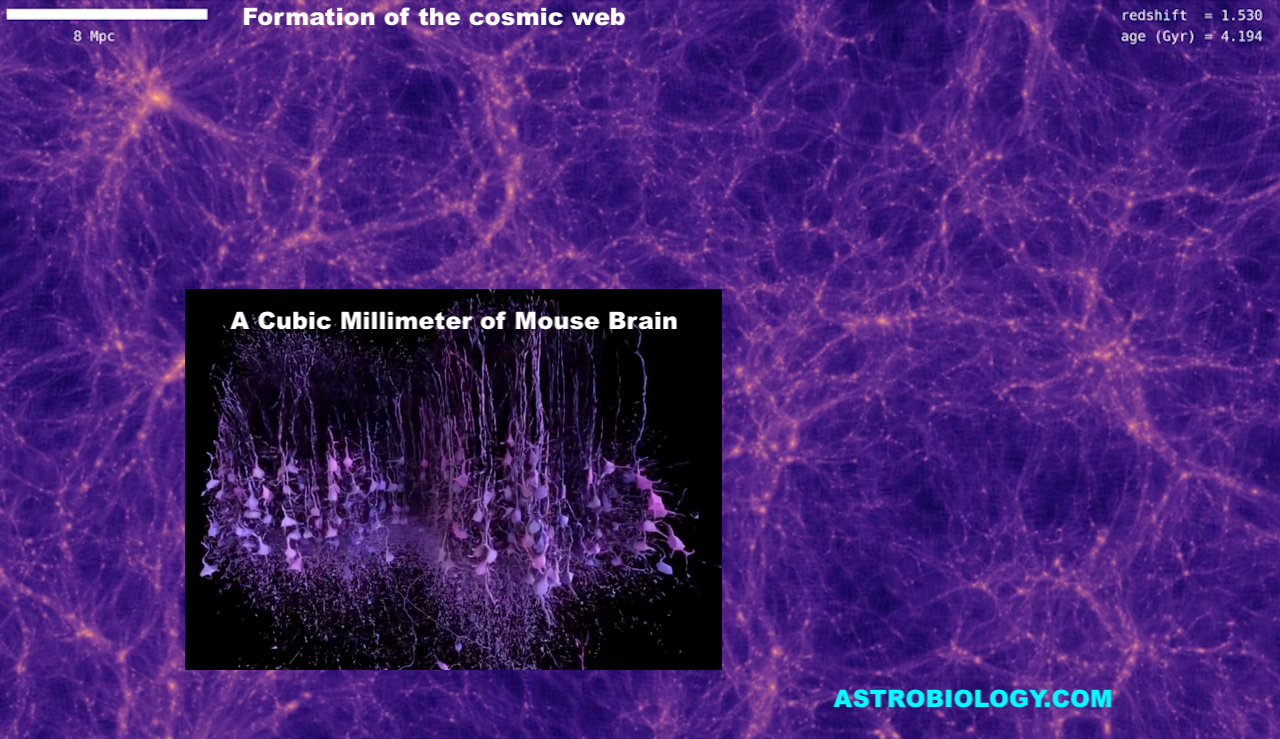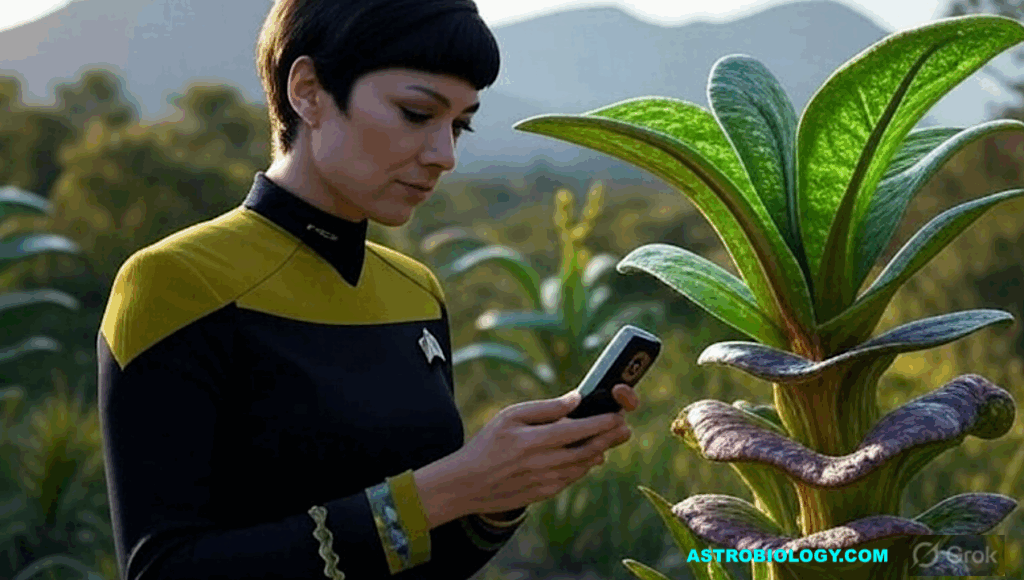Naturally Occurring Network Structures At Vastly Different Scales

Formation of the cosmic web (San Han) – Inset: A Cubic Millimeter of Mouse Brain (Quorumetrix Studio) – Astrobiology.com
Editor’s note: Astrobiology has links to and from everything NASA does. I wish NASA would think outside the box when highlighting this topic – and use the word for this agency program i.e. “astrobiology” in so doing.
Compare the structure of these two natural networks:
A Cubic Millimeter of Mouse Brain
Formation of the cosmic web
Astrobiology, Neuroscience, cosmology








